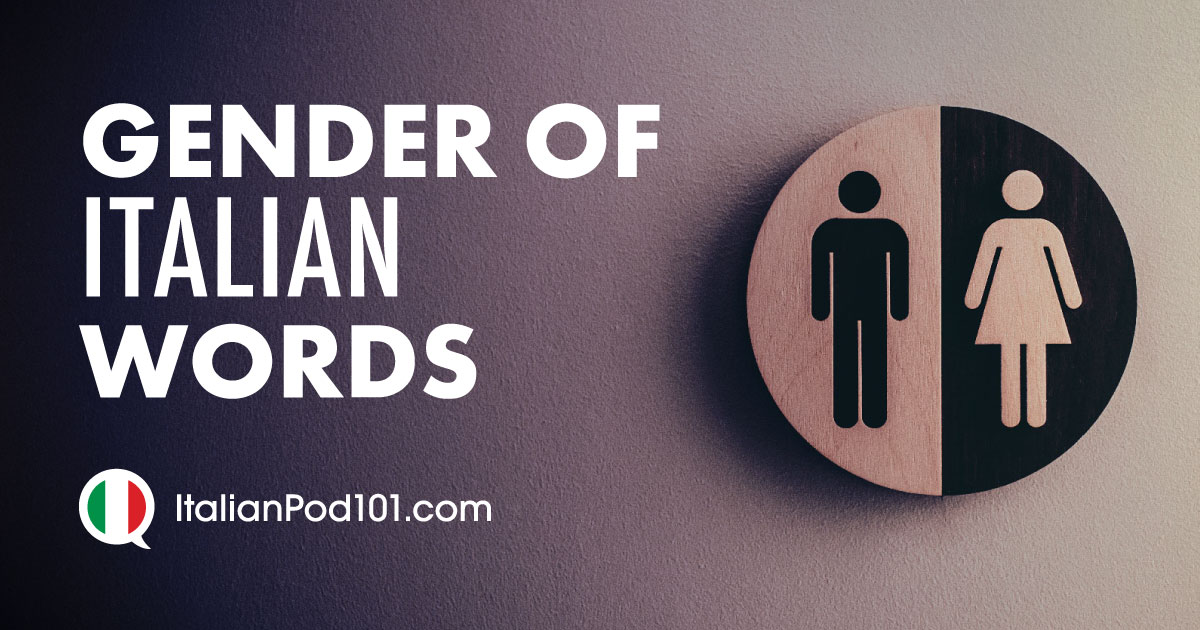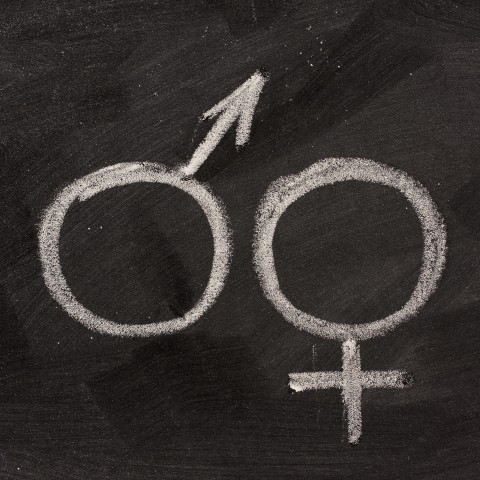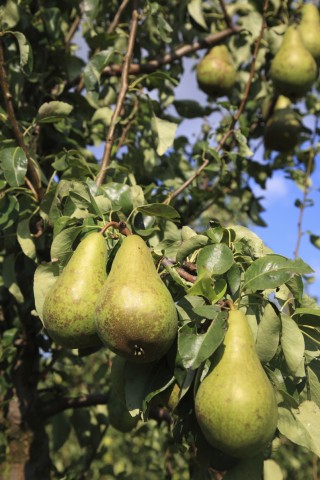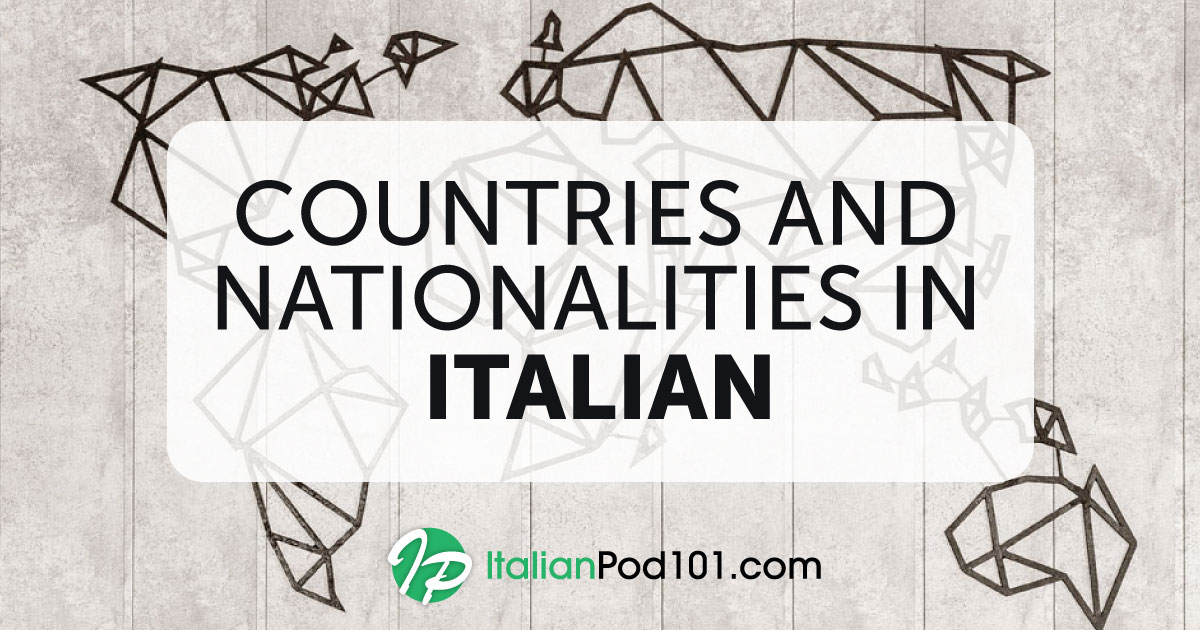Why is it important to study Italian gender rules? Unlike in English, gender in Italian is the first characteristic of every noun. In Italian, everything has a gender, and you need to know which gender it is to use a noun with the correct article, adjective, or pronoun. When you search for a word in an Italian dictionary, you’ll always find the gender next to it (m/f).
You won’t find a neutral gender for Italian names, but from day one of your Italian class, you’ll start hearing that everything has to “agree.” This means that all parts of the phrase have to be in accordance with the word gender (and number).
So, here we go with a simple grammar guide about the gender of nouns in Italian.
Table of Contents
- What is Word Gender?
- How to Make a Good Guess on the Gender of a Word
- How to Memorize the Gender of Italian Nouns
- Gender Agreement for Articles and Adjectives
- Irregulars and Weird Exceptions
- Names with Totally Different M./F. Equivalents
- Conclusion
1. What is Word Gender?
Femminile o Maschile? (Feminine or Masculine?)
In Italian, there are two gender categories: Femminile (“Feminine” ) and Maschile (“Masculine” ). This means that there is no neutral gender.
This might sound a bit strange, but in Italian, objects such as chairs (la sedia, f.) and tables (il tavolo, m.), animals such as lions (il leone, m.) and tigers (la tigre, f.), feelings such as doubt (il dubbio, m.) and happiness (la felicità, f.) have a m/f gender, and you need to memorize which word is what gender. The best way to do this is to practice repeating the noun together with the right article; the article always shows you clearly what the gender of the word is.
Some words, such as the names of animals, have feminine/masculine equivalents that sometimes have a different form, like mucca/toro (“cow/bull” ) or gallina/gallo (“hen/rooster” ). These are mostly farm or pet animals. Other wild animals have an assigned gender in the Italian language (by whom, I ask myself…?),such as una tigre (“a tiger,” f.) and un rinoceronte (“a rhinoceros,” m.). If you want to make a word feminine, you’ll have to add femmina or maschio (“female” or “male” ) next to it. For example, un rinoceronte femmina (“a female rhinoceros” ).
Un rinoceronte femmina. (“A female rhinoceros.” )
This is also the case for professions. If there’s no feminine equivalent, you should add donna (“woman” ) after the name of the profession to solve any ambiguity: un ingegnere donna (“a woman engineer” ).
2. How to Make a Good Guess on the Gender of a Word
Besides looking up the gender in the Italian dictionary, there are basic gender rules in Italian to follow to understand if a word is feminine or masculine. The easiest clue is to check the ending of the word as, generally, words ending in -o (plural ending in -i) are masculine while words ending in -a (plural ending in -e) are feminine.
- Questo libro (m) ha una bella copertina (f).
“This book has a nice cover.” - La mia casa (f) è bella e comoda.
“My house is nice and comfortable.”
That sounds pretty straightforward, but things get a bit more complicated because there are a bunch of words ending in -e that could be either gender. Don’t worry, there are a few Italian language gender rules, but you’ll just need to memorize the words that don’t fit these rules. It’s hard work at the beginning, but soon you’ll get the hang of it.
- Il nostro è un amore (m.) infinito.
“Ours is an infinite love.” - Ho trovato la tua lezione (f.) molto utile.
“I found the lesson very useful.”
3. How to Memorize the Gender of Italian Nouns
Now you have the main rule (-o is masculine and -a is feminine), but what you really need is some tips to quickly know and memorize the gender of other Italian words. Here’s a list of endings that have a certain consistency and will help you determine the gender:
- Are feminine:
- All names ending in -ione (stazione; stagione; opinione) (“station”; “season”; “opinion” ).
A Milano c’è una stazione molto bella. (“Milan has a beautiful train station.” )
L’estate è la stagione più calda. (“Summer is the hottest season.” ) - Names ending in -tà or -tù (città; felicità; virtù; gioventù) (“city”; “happiness”; “virtue”; “youth” ).
Roma è la città eterna. (“Rome is the eternal city.” )
Hai visto il film ‘La meglio gioventù?’ (“Did you see the movie The Best of Youth?” ) - Most names ending in -i in the singular (crisi; sintesi) (“crisis”; “synthesis” ).
Hai fatto una sintesi molto chiara. (“You did a very clear synthesis.” )
La crisi di governo è prossima. (“The government crisis is close.” ) - Most names of fruit (banana; pera; mela) (“banana”; “pear”; “apple” ).
Questa mela è dolcissima. (“This apple is very sweet.” )
- Names of the sciences and other abstract notions (chimica; fisica; giustizia; pace) (“chemistry”; “physics”; “justice”; “peace” ).
La matematica è bellissima! (“Math is beautiful!” )
La pace è femminile! 😉 (“Peace is feminine!” ) 😉
- All names ending in -ione (stazione; stagione; opinione) (“station”; “season”; “opinion” ).
- Are masculine:
- All names ending in -ore (calore; attore; professore; ecc.) (“heat”; “actor”; “professor”; “etc.” ). Notice how nouns of professions ending in -tore are made feminine with the -trice ending, as in attore >> attrice (“actor >> actress” ).
Oggi c’è un calore intenso. (“Today there is an intense heat.” )
Hai incontrato il mio professore? (“Did you meet my professor?” ) - Most names of trees (melo; pero) (“apple tree”; pear tree” ). While in English, to make the name of a fruit tree, you have to add “tree,” in Italian you just switch the gender of fruit from feminine to masculine…rather convenient, right?
Maria è caduta dal pero. (“Maria fell off the pear tree.” )
Fun fact: Did you know that cadere dal pero is an idiomatic expression meaning that you were oblivious of something? Maybe this is because pear trees are rather tall and common in Italy; to be on top of it means that you’re less in contact with reality…
Cadere dal pero (“To fall from the pear tree” ) really means “to have no idea.”
- Greek origin names ending in -ma (problema; sistema; teorema) (“problem”; “system”; “theorem” ).
Questo problema è molto serio. (“This problem is very serious.” )
Non ho mai capito il teorema di Pitagora. (“I have never understood Pythagoras Theorem.” )Notice how, even if they end in -a in the singular, the plural of these names in -ma of Greek origin have a masculine regular plural in -i (il problema >> i problemi).
- All names of foreign origin ending in a consonant (bar; sport) (“bar”; “sport” ).
Il mio sport preferito è la pallacanestro. (“My favorite sport is basketball.” )
Questo è il bar dove servono il caffè migliore della città. (“This is the bar where they serve the best coffee in town.” ) - Names of (most) professions ending in -ta (poeta; pilota; astronauta). Note that some of them become feminine using the -essa ending, as in poetessa while others don’t change, such as la pilota or la giovane astronauta).
Il più grande poeta Italiano è Dante. (“Dante is the greatest Italian poet.” )
- Names of months and days (except for domenica (f) = “Sunday”).
È stato il dicembre più caldo del secolo! (“It was the hottest December of the century!” )
- All numbers (except for numbers indicating hours).
Il tre è il numero perfetto. (“Three is the perfect number.” )
Il 99% degli Italiani adora la pizza! (“99% of Italians love pizza!” )
- All names ending in -ore (calore; attore; professore; ecc.) (“heat”; “actor”; “professor”; “etc.” ). Notice how nouns of professions ending in -tore are made feminine with the -trice ending, as in attore >> attrice (“actor >> actress” ).
Are you ready for a little practice? Can you tell the Italian grammar gender of the nouns listed in this video?
4. Gender Agreement for Articles and Adjectives
Let’s talk about the dreaded concordanza (“the agreement” ). First things first, in Italian, most nouns need to be introduced by the article (determinate or indeterminate) and they have to agree in gender (and number) with the noun.
So, in order to memorize the gender of the words (besides the few Italian noun gender rules mentioned above), the best way is to memorize article + noun as a unique entity. The article always tells you clearly what the gender is.
-
– la lezione (f.) (“the lesson” )
– il fiore (m.) (“the flower” )
Here’s a little reminder of the way m./f. definite and indefinite articles change their form according to phonetic rules:
| Determinate Masculine Article (the) | ||
|---|---|---|
| Sing. | Pl. | |
| il | i | This is the regular form and is more commonly used. |
| lo | gli | This form is used in front of nouns starting with specific letters:
|
| Determinate Feminine Article (the) | ||
|---|---|---|
| Sing. | Pl. | |
| la | le | Same as for the masculine, in front of a vowel, the article la >> l’:
|
| Indeterminate Masculine Article (a/an) | ||
|---|---|---|
| un | This is the more commonly used form in front of a consonant or a vowel:
|
|
| uno | This form is used in front of nouns starting with S+consonant, z, x, y, gn, and ps:
|
|
| Indeterminate Feminine Article (a/an) | ||
|---|---|---|
| una | In front of a vowel, the article una >> un’:
|
|
So, we were talking about the agreement: all variable parts of the sentence have to agree with the gender (m./f.) and the number (sing./pl.) of the noun. Variable parts are:
-
– Articles (definite/indefinite)
– Adjectives
– Possessive adjectives (my; yours)
– Demonstrative adjectives (this; that)
– Indefinite adjectives (some)
– Pronouns (him; her; it)
– Past participle
Let’s analyze a sentence like this one, where the main noun is masculine (bambino = “kid” ):
Il mio bambino (m) é andato a scuola. (“My kid went to school.” )
Article + possessive + noun + (verb) + past participle; they all agree to the masculine form, except for the object (a scuola).
Or let’s take this one:
Nessuna pizza (f) è buona come questa. (“No pizza is as tasty as this one.” )
Indefinite + noun + (verb) + adjective + demonstrative; they all agree to the feminine form, except the verb.
Notice how the verbs don’t have to agree with the gender in Italian. But you do have to ensure that the past participle, which is part of the passato prossimo (“present perfect” ), agrees when it’s conjugated with the essere (“to be” ) auxiliary verb. But this will be part of another lesson coming up shortly about Italian conjugations on ItalianPod101.com!
Finally, one of the main consequences of all these Italian grammatical gender rules is that when you speak or write in Italian, you first have to think of the gender of the main noun, and then you can form the sentence accordingly.
5. Irregulars and Weird Exceptions
As usual, when it comes to syntax and grammar, there are exceptions. In particular, you might find nouns that look masculine because they end in -o but are feminine. These feminine -o nouns are often shortened words, such as:
- la radio (“radio” ) is short for radiotrasmettitrice
- la foto (“photo” ) is short for fotografia
- la moto (“bike” ) is short for motocicletta
- l’auto (“car” ) is short for automobile
È una moto? No, è una Vespa! (“It’s a motorcycle? No, it’s a Vespa!” )
Similar, but opposite, is the case of il cinema (short for cinematografo.)
A little different is the case of la mano (“hand” ) because it’s not the shortened version of anything.
Then there are names, mainly of professions, that have the same ending of -ista or -a, and can be either masculine or feminine. And this is a typical situation where you have to rely on the article, agreement, or purely the context, to figure out the gender.
Ending in -ista: il/la turista (“the tourist” ); il/la dentista (“the dentist” ); il/la giornalista (“the journalist” ).
-
– La turista è contenta. (“The tourist is happy.” )
– Questo giornalista sportivo scrive per la Repubblica. (“This sports’ journalist writes for la Repubblica.” )
Ending in -a: il/la collega (“the colleague” ); lo/la psichiatra (“the psychiatrist” ).
-
– Il mio collega mangia sempre in ufficio. (“My colleague always eats in the office.” )
– È un bravo psichiatra. (“He is a good psychiatrist.” )
Notice how in both cases, the plural of these nouns in -ista/-a ends in -e for feminine and in -i for masculine:
- La turista >> Le turiste
- Il turista >> I turisti
- La collega >> Le colleghe
- Il collega >> I colleghi
Then there’s the most bizarre of all cases: when a noun changes gender according to the number, that is, if it’s singular or plural. There are not—luckily—too many of those, but they are very common words:
| Singular is masculine | Plural is feminine | |
|---|---|---|
| L’uovo | Le uova | “The egg/s” |
| Il dito | Le dita | “The finger/s” |
| Il braccio | Le braccia | “The arm/s” |
| Il paio | Le paia | “The pair/s” |
| Il riso | Le risa | “The laugh/s” |
| L’osso | Le ossa | “The bone/s” |
| Il lenzuolo | Le lenzuola | “The sheet/s” |
| Il muro | Le mura | “The walls” |
6. Names with Totally Different M./F. Equivalents
Some names form their feminine counterpart from a very different root. We’ve already seen the case of pet/farm animals. Besides those, most of the other names belong to the relatives‘ category. See the examples below:
| m | f | m | f |
|---|---|---|---|
| fratello | sorella | “brother” | “sister” |
| padre | madre | “father” | “mother” |
| uomo | donna | “man” | “woman” |
| marito | moglie | “husband” | “wife” |
| genero | nuora | “son-in-law” | “daughter-in-law” |
| dio | dea | “god” | “goddess” |
7. Conclusion
Italian gender rules can be a bit complicated, so you’ll need to learn a few tricks and practice, practice, practice. Do you want to know more? Do you want to practice with podcasts, lesson materials, and videos? Check out ItalianPod101.com for more, and keep up the good work!
Before you go, let us know in the comments if Italian gender rules are similar or different from those in your own language (or if your language has them at all!). We look forward to hearing from you!
















